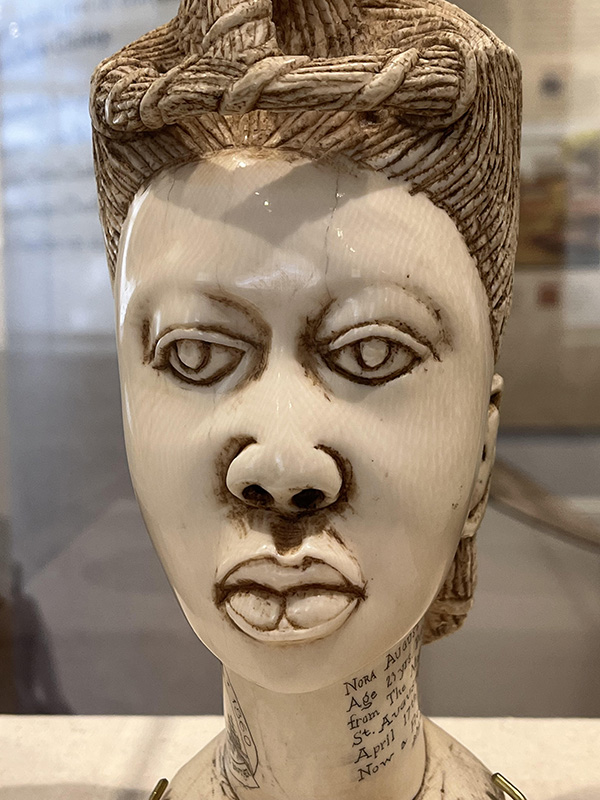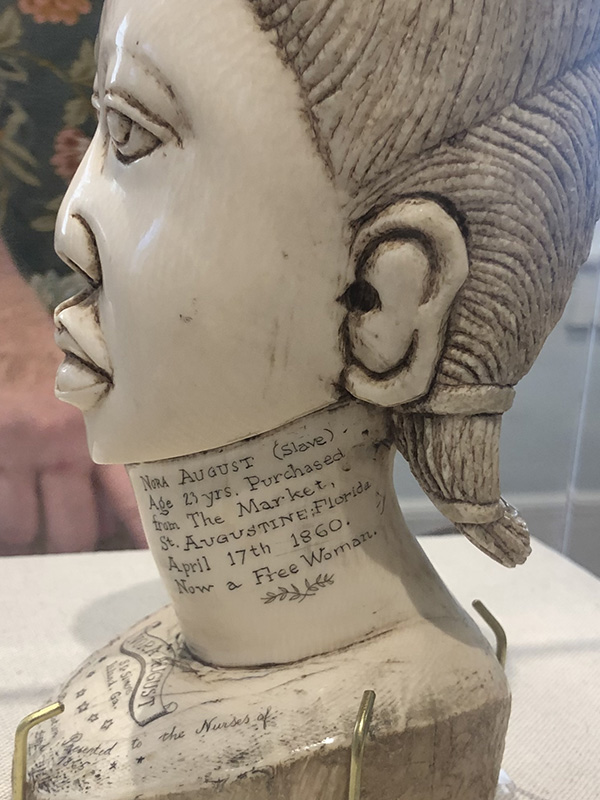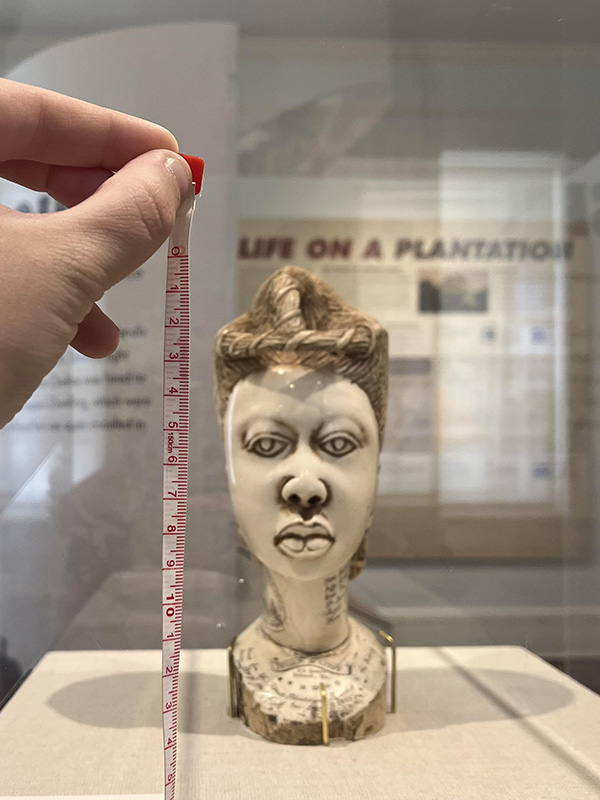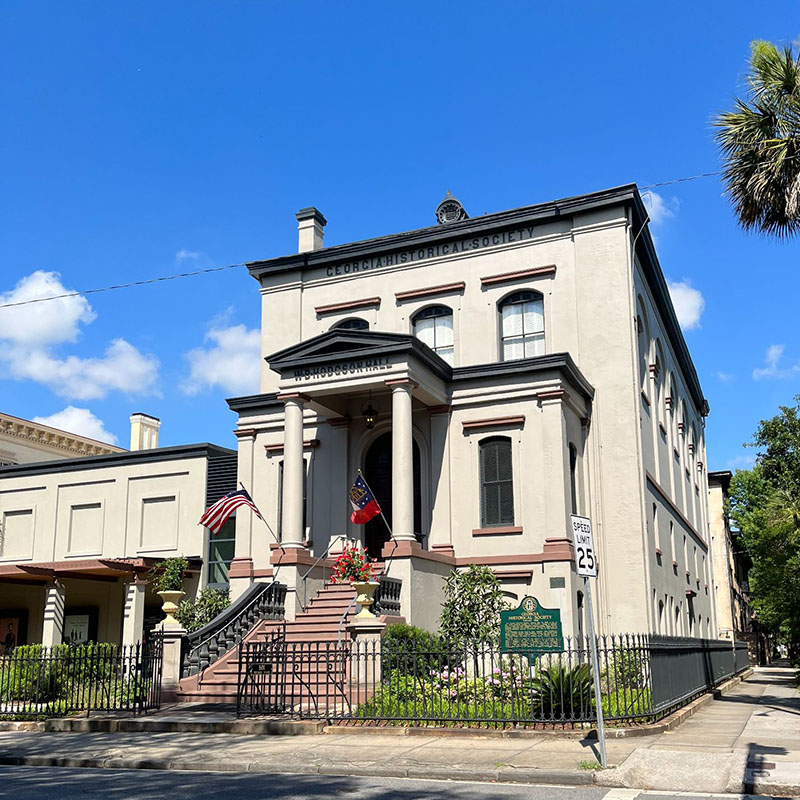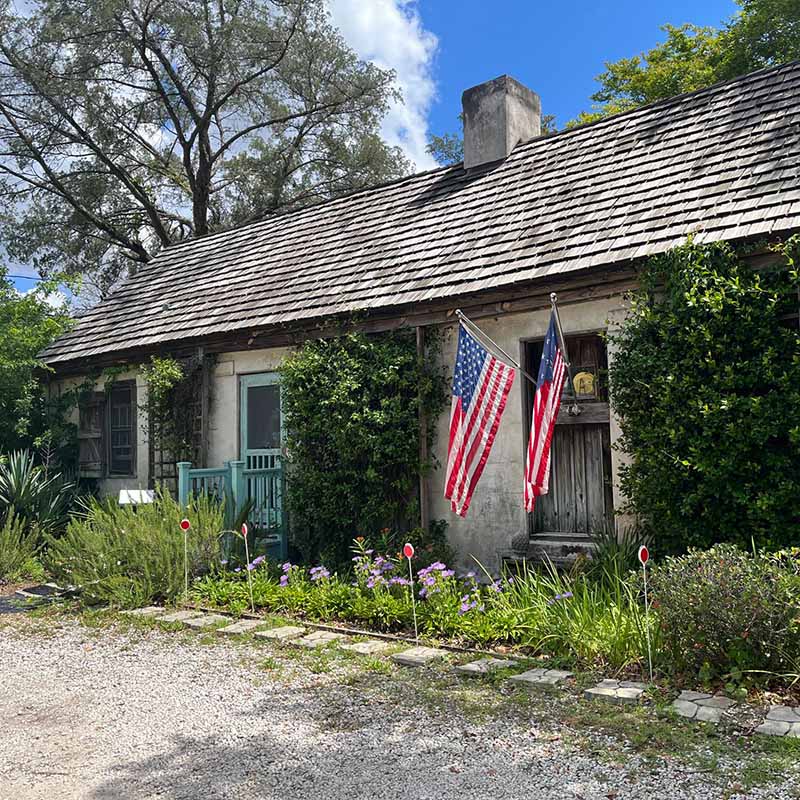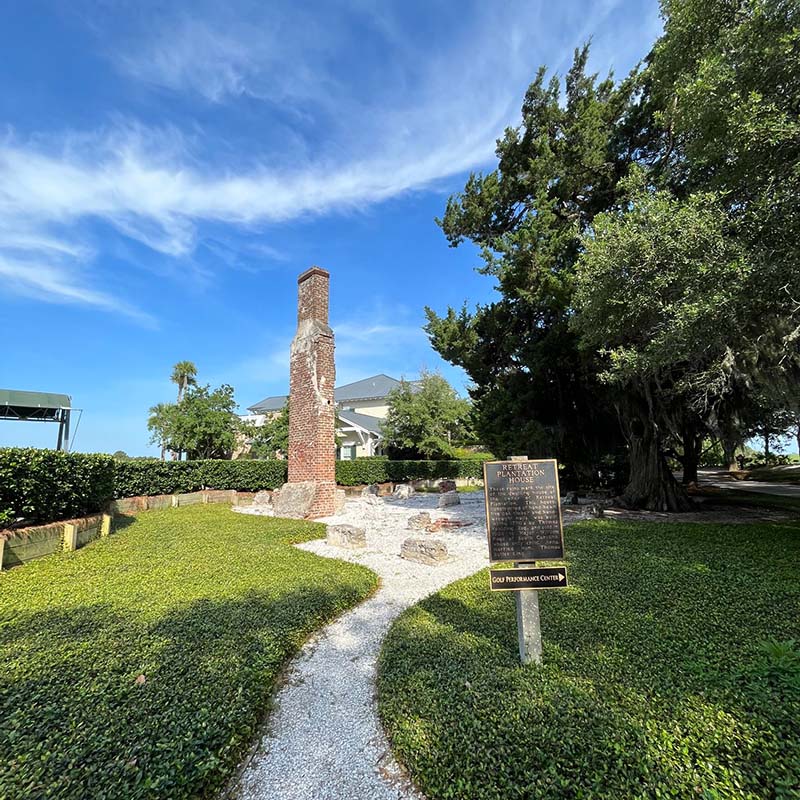Searching for Nora August, an Enslaved Woman Represented in an 1865 Ivory Bust
by Grace Ford-Dirks
With the support of the Decorative Arts Trust, I was able to spend three weeks in South Carolina and Georgia researching the Bust of Nora August for my MA thesis in the University of Delaware’s Winterthur Program in American Material Culture.
This unusual ivory bust depicts a formerly enslaved woman, Nora August, and was carved in 1865 by an unknown maker on Retreat Plantation in St. Simons Island, GA. The bust is an archive within an object, offering clues about both global connections and individual histories. It gives scholars a rich window into the interconnected material world of the coastal South and challenges our conceptions of the immediate post-emancipation period. My thesis unpacked this object’s relationship to the artistic, material,1 and social exchange networks in the 19th century South and situated the bust within historical racial discourses surrounding Black agency and emancipation.
Close up photo of the bust showing detail of the material, taken during my first research visit to the Coastal Georgia Historical Society. 𝘉𝘶𝘴𝘵 𝘰𝘧 𝘕𝘰𝘳𝘢 𝘈𝘶𝘨𝘶𝘴𝘵, 1865, St. Simons Island, GA. Ivory. Coastal Georgia Historical Society. Photo by author.
Detail of the 𝘉𝘶𝘴𝘵 𝘰𝘧 𝘕𝘰𝘳𝘢 𝘈𝘶𝘨𝘶𝘴𝘵 showing the text: “Nora August (Slave). Age 23 yrs. Purchased from The Market, St. Augustine, Florida April 17th 1860. Now a Free Woman.” Photo by author.
Places, people, and networks are at the heart of my project. Thus, my goal during this initial study trip was to find as much information as possible about Nora August through the environments she inhabited and the material and textual traces she might have left behind. Spending a week in Savannah at the Georgia Historical Society allowed me to explore the history of the Sea Island Company and read the papers of planter families living on St. Simons between 1855 and 1865. Since the bust itself offers very specific dates for Nora August’s major life events prior to emancipation, I was looking for parallel evidence of her life in plantation or legal records. Though I was unable to find any specific mention of Nora, I was able to build a clearer understanding of enslaved life on St. Simons during the Civil War.
The only extant slave quarter on the land formerly known as Retreat Plantation (now known as Tabby House Gifts). Nora August may have lived in a dwelling similar to this one. The surrounding historic landscape was demolished in the process of building the McKinnon-St. Simons Island Airport and the Sea Island Golf Club in the early 20th century. Photo by author.
Ruins of Retreat Plantation House, now a part of the Sea Island Golf Club. Retreat Plantation burned in the late 19th century. When the Sea Island Company began developing the land in the early 20th century, the ruins of the main house and surrounding buildings were preserved and aestheticized as decorative scenery on the golf course. Photo by author.
I spent the next week on St. Simons Island investigating the individuals and landscapes referenced throughout the sculpture. I spent time getting to know the island’s natural features and historic built environment in order to develop a clearer understanding of the physical world in which Nora August might have lived. Digging deep into county record offices and local library archives, I once again attempted to locate her in a documentary record. With the generous assistance of the Coastal Georgia Historical Society, I was able to study and photograph the bust itself in its case. Near the end of my visit, I shared generative conversations with the historians at the St. Simons African American Heritage Coalition who offered incredible local context that nuanced my conception of the island’s history. Finally, a brief visit to Beaufort and a final trip home to Charleston gave me the chance to discuss my project with archivists, curators, and historians, all of whom were able to lend unique experiential perspectives and new insights to my research.
While I found the absence of a historical Nora August in the archive and landscape initially frustrating, I decided to embrace the ever-present absences in the final thesis. I divided the project into three sections that analyzed the object as archive, as narrative, and as relic. First, I reflected on the bust as “archive within an object” and as a material repository for individual and collective memory of emancipation and enslavement. Second, I argued that the Bust of Nora August is a material slave narrative that uses a potent combination of text and likeness to convey Nora’s story. Blending the visual, haptic, and textual languages of the slave narrative and portrait bust genres, the bust acted as a material extension of Nora’s being and offered a tool to seek connection and belonging amid a deeply uncertain political and social climate. Finally, I analyzed the role of the bust on present-day St. Simons Island. I assessed how the island’s privatized objects and landscapes of historical memory have impacted the ways in which historical narratives are conveyed to the public. My analysis drew on decades of historical, art historical, literary, and archival studies in order to offer a first step towards a holistic understanding of the object and its networks.
The three weeks of research in the Sea Islands gave me a richer understanding of the people, places, and materials in the past and present alike. Since my scholarship is deeply place-driven, spending time working in the South Carolina and Georgia Lowcountry helped me develop a clear outline for the project and for further research. I am grateful to the Decorative Arts Trust for giving me the opportunity to carry out such an enriching research trip that laid the groundwork for future stages of my MA thesis project.
1. I have been unable to reach any firm conclusions about the source of the ivory. I have visually ID’d it as elephant ivory but I am less certain about its geographic origin since the object’s owners did not allow me to test the material. Speaking with Lowcountry curators and doing further research also suggested that this was possibly the only ivory bust of its kind in the region.
Grace Ford-Dirks is the research assistant in American silver at the Philadelphia Museum of Art and is a recent graduate from the Winterthur Program in American Material Culture at the University of Delaware.
About The Decorative Arts Trust Bulletin
Formerly known as the "blog,” the Bulletin features new research and scholarship, travelogues, book reviews, and museum and gallery exhibitions. The Bulletin complements The Magazine of the Decorative Arts Trust, our biannual members publication.
Click Images to Enlarge
Did you know that clicking on the images in Bulletin posts will allow you to get a closer look? Simply click on an image, and a larger version will open in a pop-up window.








